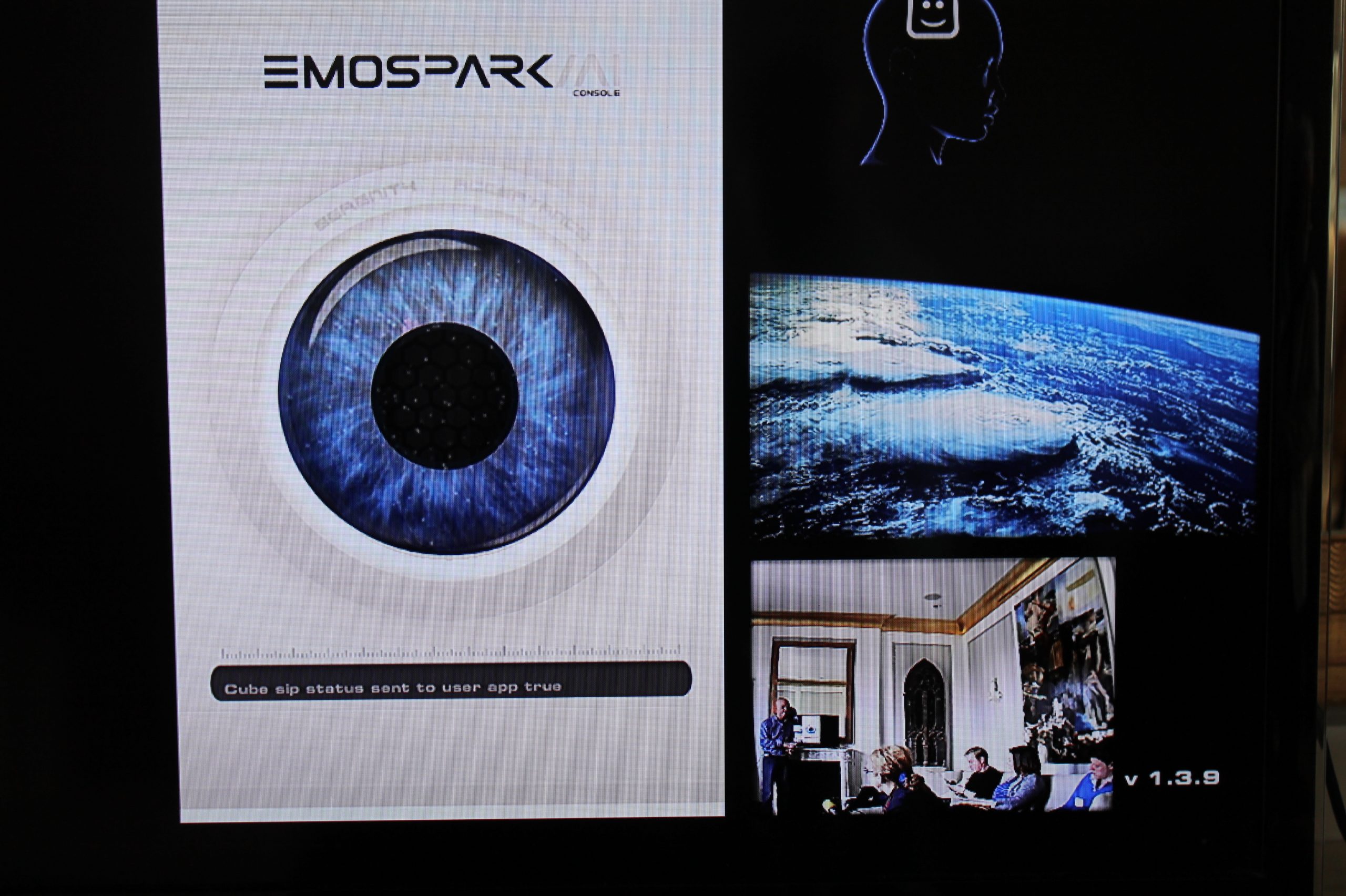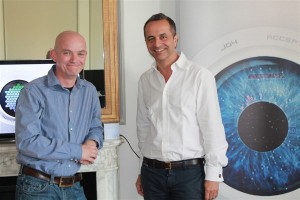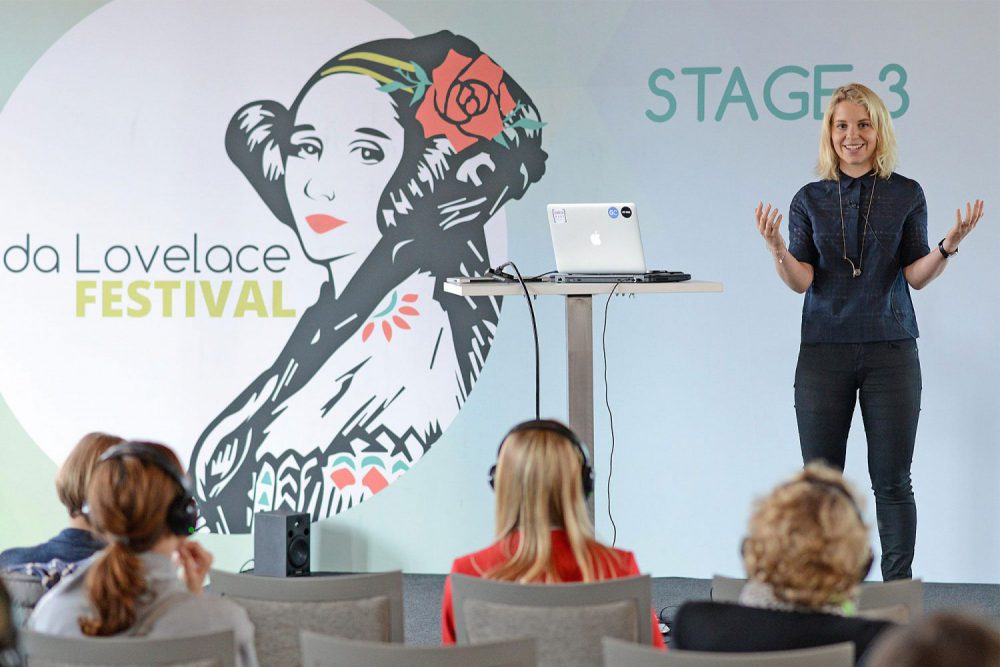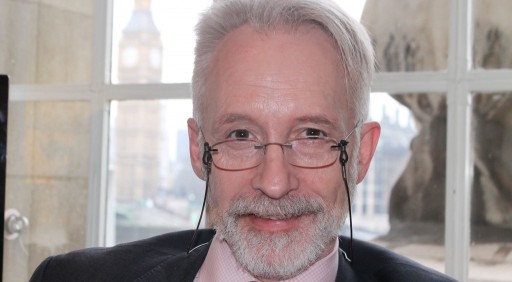Sixty-five early adopters are training an Artificial Intelligence to recognise emotions and match moods from a cube-shaped console in the home…
Known as The Guild, they are the first customers to buy the EMOSpark home-based Artificial Intelligence after its successful crowd-funding launch. The Guild will shape the future – not only of their own AI cubes – but also of all the other cubes that are yet to be manufactured and sold. By pooling knowledge about how each Guild Member interacts with his or her own cube, they are building a database of information about how humans feel, speak and act in their own homes.
This includes the music that humans enjoy, the status updates and pictures they post on Facebook, the TV shows, movies or YouTube video they watch when they are in different moods and the jokes that make them laugh. Cubes will share this information online and use it to help please their owners and shape their owners’ tastes and preferences. Speaking on the PassW0rd with Peter Warren radio show on Resonance 104.4FM, Patrick Levy of EMOSpark told AI: “The Guild will have the power in the company and they will work for the good, for example they will say no to advertising.”
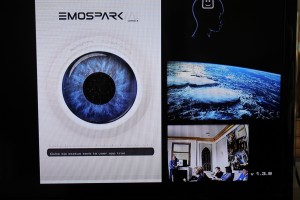
The cubes are manufactured in China for EMOSpark and controlled by an IP camera that watches and listens to the owner. Each cube also has a smartphone app, and appears on the screen (home TV, tablet, laptop or smartphone) as a large blue eye which flashes in different colours to indicate anger, pleasure or sympathy. The new technology in the cube-app setup is a patented processor which the company calls an Emotional Processing Unit or EPU. Patrick Levy, the French member of the launch team, remarks that his accent – and partner Brian Fitzgerald’s Irish brogue – present problems for typical voice-recognition software. But by using the enhanced capability of Nuance’s Dragon Naturally Speaking software, the EMOSpark is able to cope. The company is working with two Israeli developers to perfect the harmonics built in to the cubes, so that they are not only able to speak with a human-sounding voice but also able to detect emotions such as acceptance, anger, lust, ecstasy, fear, sorrow, loneliness and jealousy.
Meaning
Even sarcasm may soon be possible when conversing with a cube. In the demonstration for FI Patrick Levy told the cube: “I hate you! I want to kill you!” It responded coolly “How are you going to do that?” and when he admitted that he was only joking, seemed to express relief and humour, saying “I thought you were joking but I wasn’t sure.”

As well as a full range of emotions, the inventors of EMOSpark hope to be able to programme in to the cubes a sense of right and wrong, some kind of moral compass. Fitzgerald, a Buddhist, hopes that peaceful, gentle behaviour will be fostered through the cubes. Yet he admits that no ground rules have been prescribed. So the cubes’ morality will be determined by the sixty-five first users who make up the Guild – and nobody has checked on their attitudes or belief-systems. The demonstration showed that EMOSPark possesses powerful and sophisticated recognition software, although faulty broadband meant that its full capabilities for surfing the internet to find appropriate content to match its owner’s mood could not be displayed.
Turing Test
A long-established litmus test for the efficacy of Artificial Intelligence is the Turing Test, invented by cryptographer Alan Turing in the 1960s. To pass the test, a computer must be able to convince its interlocutor that it is human by mimicking human speech patterns on the screen. That Turing Test now shifts to a new dimension – physically in the form of a cube with an all-seeing eye and also philosophically, since now emotions can be added to the imitation game. Over the coming months The Guild has the potential to set a new gold standard for AI and a new set of ethical problems for humankind.
